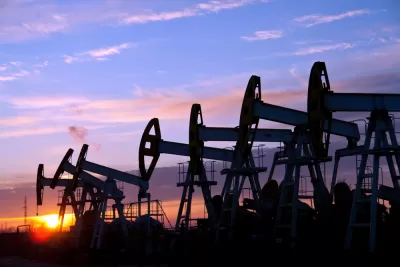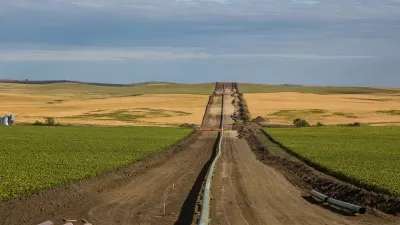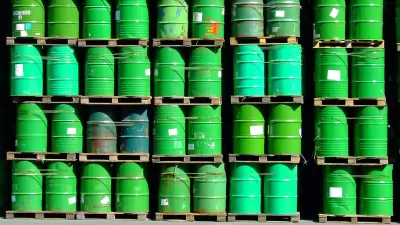The current shale boom can't last forever. A new report says it will end much sooner that the federal government realizes.

According to Tina Casey, a report by the Post Carbon Institute, titled "Drilling Deeper: A Reality Check on U.S. Government Forecasts for a Lasting Tight Oil & Shale Gas Boom," makes a dire prediction about the longevity of the domestic shale oil and gas boom, predicting that "reserves will peak and drop off rapidly, long before officially predicted by the US Energy Information Agency."
The Post Carbon Institute is the same organization that checked the U.S. EIA's projections for California’s Monterey Shale 1 formation—projections that ended up missing the mark by 96 percent—from 13.7 billion barrels to 600 million barrels.
This time, the "report examines EIA’s forecasts for 12 shale plays that together cover 82% of tight oil (tight oil refers to oil recovered from shale formations, not to be confused with oil shale) and 88% of shale gas production."
The report's analysis spells early doom for the current boom, as quoted in Casey's article:
- "Tight oil production from the two top plays, the Bakken and Eagle Ford, will underperform the EIA’s reference case oil recovery by 28% from 2013 to 2040…By 2040, production rates from the Bakken and Eagle Ford will be less than a tenth of that projected by the EIA."
- "Shale gas production from the top seven plays will underperform the EIA’s reference case forecast by 39% from 2014 to 2040…By 2040, production rates from these plays will be about one-third that of the EIA forecast."
FULL STORY: Fracking’s Slow-Motion Train Wreck Revealed In New Report

Alabama: Trump Terminates Settlements for Black Communities Harmed By Raw Sewage
Trump deemed the landmark civil rights agreement “illegal DEI and environmental justice policy.”

Study: Maui’s Plan to Convert Vacation Rentals to Long-Term Housing Could Cause Nearly $1 Billion Economic Loss
The plan would reduce visitor accommodation by 25% resulting in 1,900 jobs lost.

Why Should We Subsidize Public Transportation?
Many public transit agencies face financial stress due to rising costs, declining fare revenue, and declining subsidies. Transit advocates must provide a strong business case for increasing public transit funding.

Paris Bike Boom Leads to Steep Drop in Air Pollution
The French city’s air quality has improved dramatically in the past 20 years, coinciding with a growth in cycling.

Why Housing Costs More to Build in California Than in Texas
Hard costs like labor and materials combined with ‘soft’ costs such as permitting make building in the San Francisco Bay Area almost three times as costly as in Texas cities.

San Diego County Sees a Rise in Urban Coyotes
San Diego County experiences a rise in urban coyotes, as sightings become prevalent throughout its urban neighbourhoods and surrounding areas.
Urban Design for Planners 1: Software Tools
This six-course series explores essential urban design concepts using open source software and equips planners with the tools they need to participate fully in the urban design process.
Planning for Universal Design
Learn the tools for implementing Universal Design in planning regulations.
Smith Gee Studio
Alamo Area Metropolitan Planning Organization
City of Santa Clarita
Institute for Housing and Urban Development Studies (IHS)
City of Grandview
Harvard GSD Executive Education
Toledo-Lucas County Plan Commissions
Salt Lake City
NYU Wagner Graduate School of Public Service




























